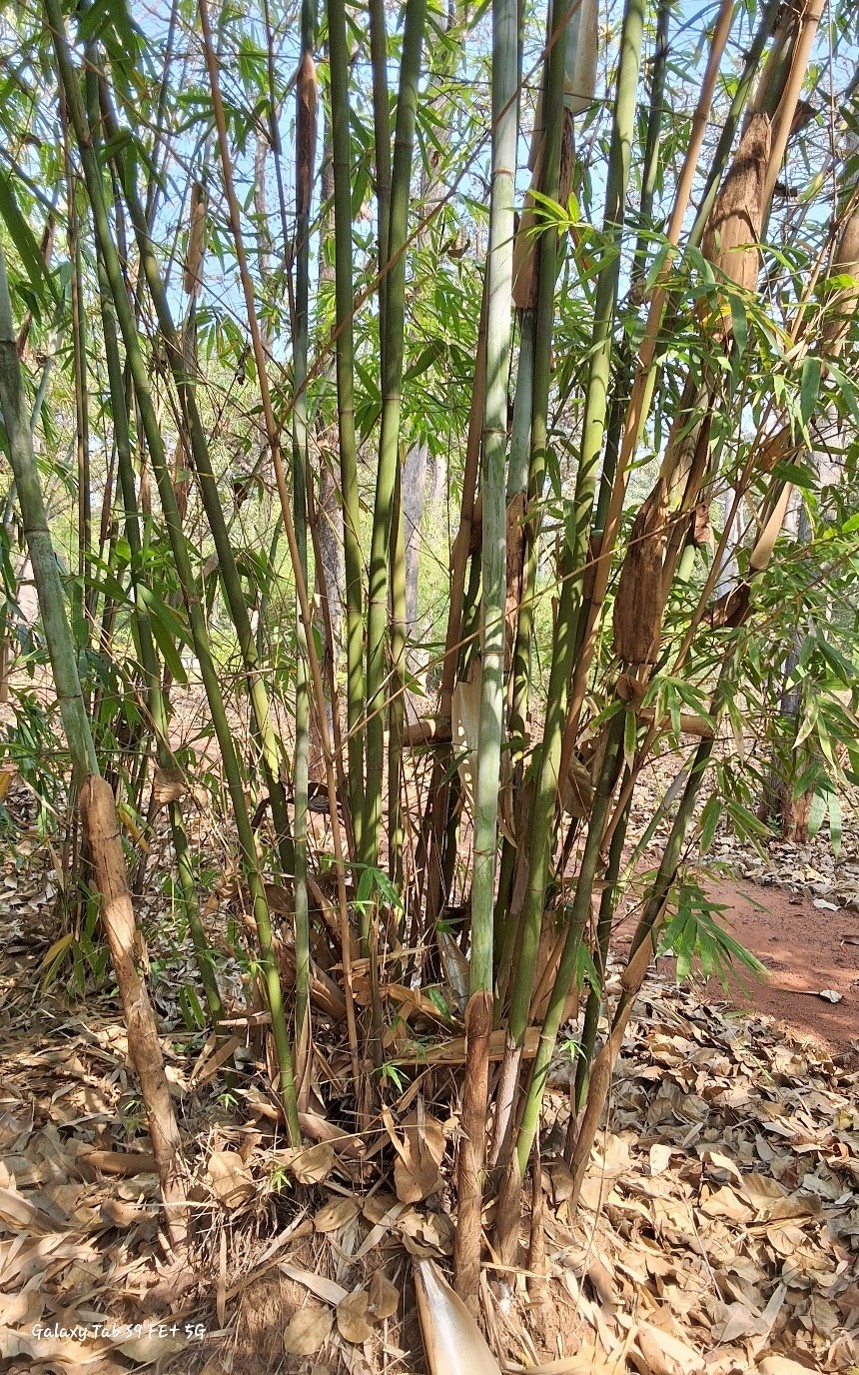Dendrocalamus somdevai

Dendrocalamus somdevai
Dendrocalamus somdevai commonly known as Somdevai Bamboo, is a clumping bamboo species native to Assam, India, and is typically found in moist subtropical forests near rivers or streams in hilly regions at elevations of 500 m to 1,200 m. This bamboo thrives in areas receiving moderate rainfall, typically around 2,000 mm to 3,000 mm annually, which provides the humid environment essential for its growth. It prefers well-drained, fertile soils, often found in loamy or clay-rich soils, but it is adaptable to various soil types.
The bamboo culms of Dendrocalamus somdevai grow to a height of 10 to 15 meters with a diameter ranging from 6 to 12 cm. The culms are initially green but gradually turn light brown or yellow as they mature. The internode length is between 25 to 40 cm, and the culm sheath is green when young, turning brown or yellow with age. The adaxial surface of the sheath is smooth and glabrous, while the abaxial surface is slightly hairy, with a ciliate margin. The leaves are lanceolate to narrow ovate in shape, measuring 18 to 30 cm in length and 3 to 5 cm in breadth, with pointed tips.
The inflorescence of Dendrocalamus somdevai consists of a large, branched panicle with numerous small flowers. The empty glumes are oval or lanceolate, with many veins, and the flowering glumes are larger with ciliate edges. The stamens are exserted, with glabrous anthers, and the pistil features a hairy style with a small, inconspicuous stigma. Flowering is rare, occurring infrequently, typically once every 30 to 40 years. Flowering has been recorded in Assam, but it is not a frequent occurrence. Due to the long flowering cycle, this bamboo rarely produces seeds.
Propagation of Dendrocalamus somdevai is commonly achieved through culm cuttings, although it can also be propagated by dividing mature clumps, separating offsets or new shoots from the base, or using tissue culture in controlled environments.
The bamboo is used for various purposes. It is commonly employed in construction for making poles, scaffolding, and other structural applications. Additionally, it is valued for crafting furniture, baskets, and other handcrafted items. The young shoots of Somdevai Bamboo are edible and consumed in local cuisines as a source of nutrition. The bamboo's strong root system makes it effective in erosion control, especially in hilly areas. It is also used in the pulp and paper industry for producing paper and pulp products. In some regions, it serves traditional uses, including the making of tools, musical instruments, and containers.
Listen Audio:
Need assistance? BRTC Faculty